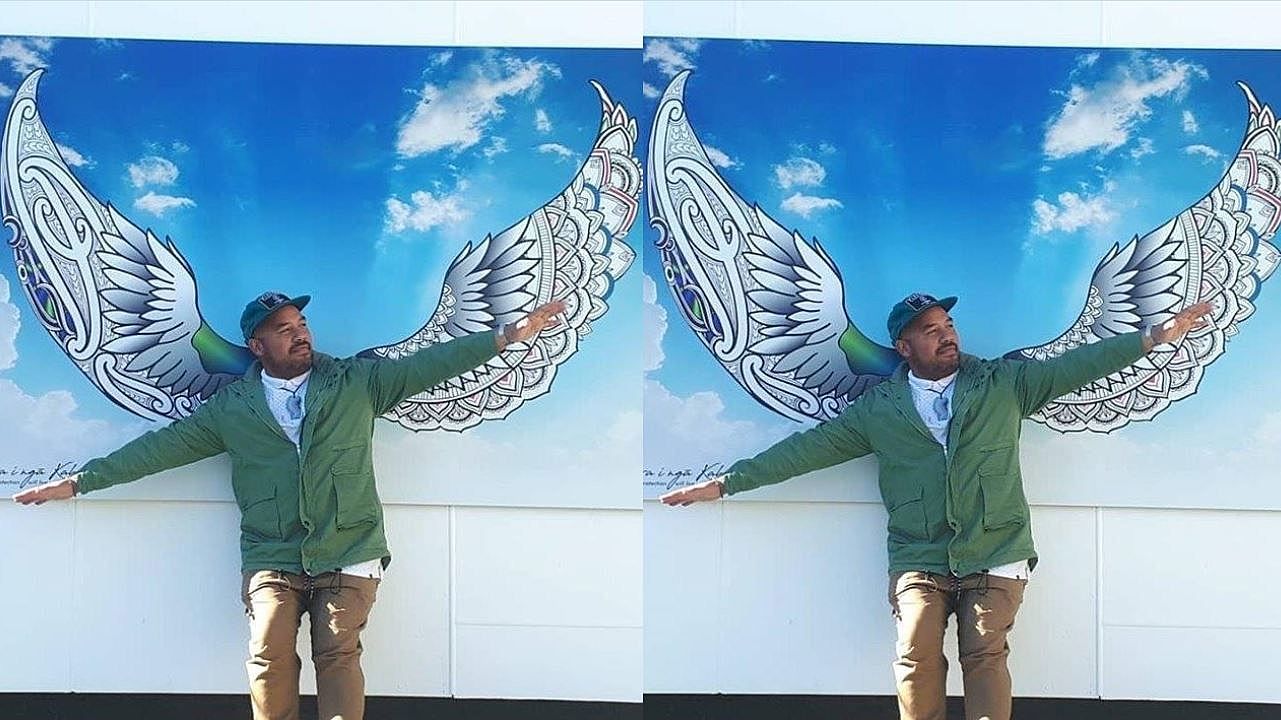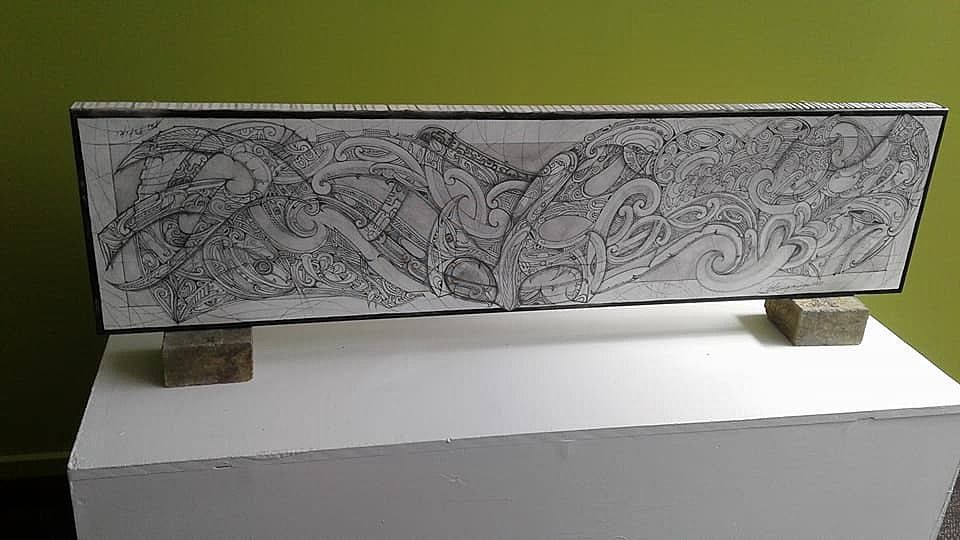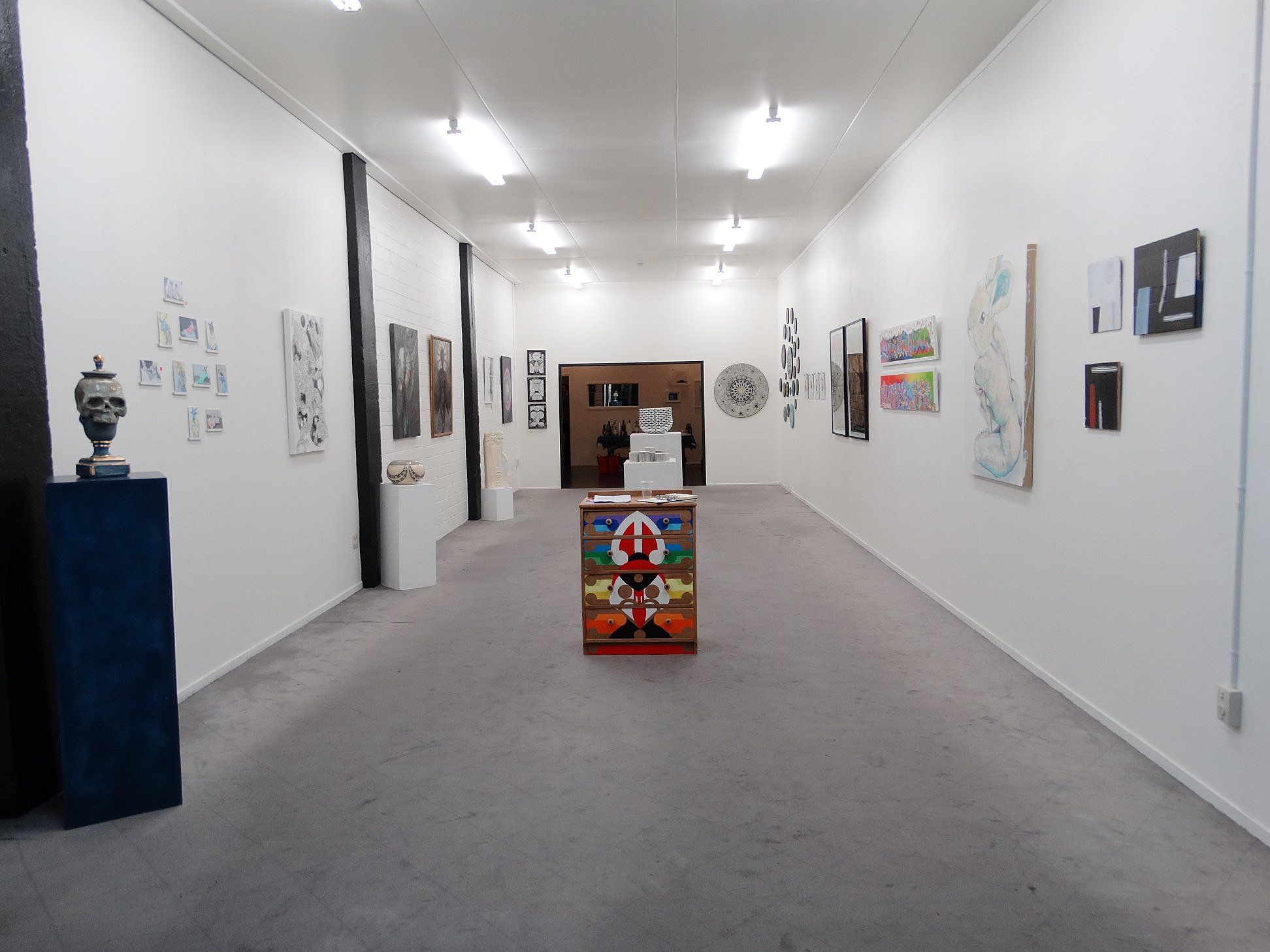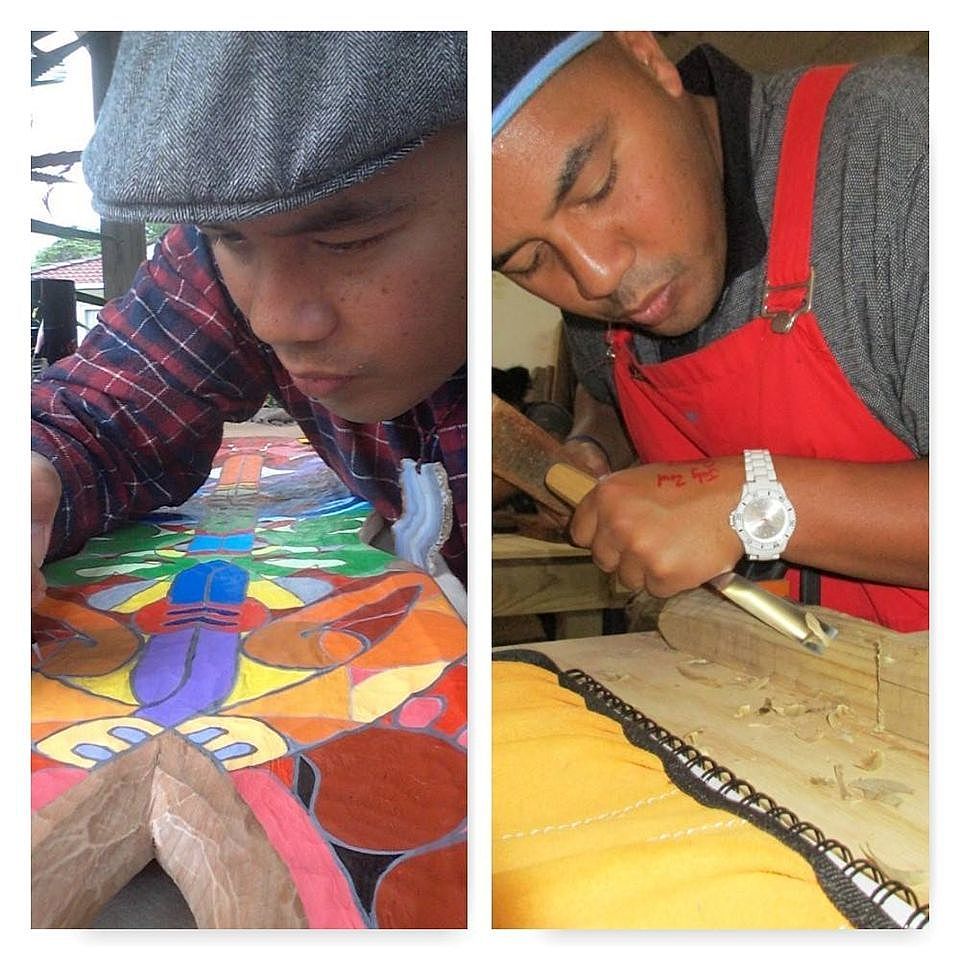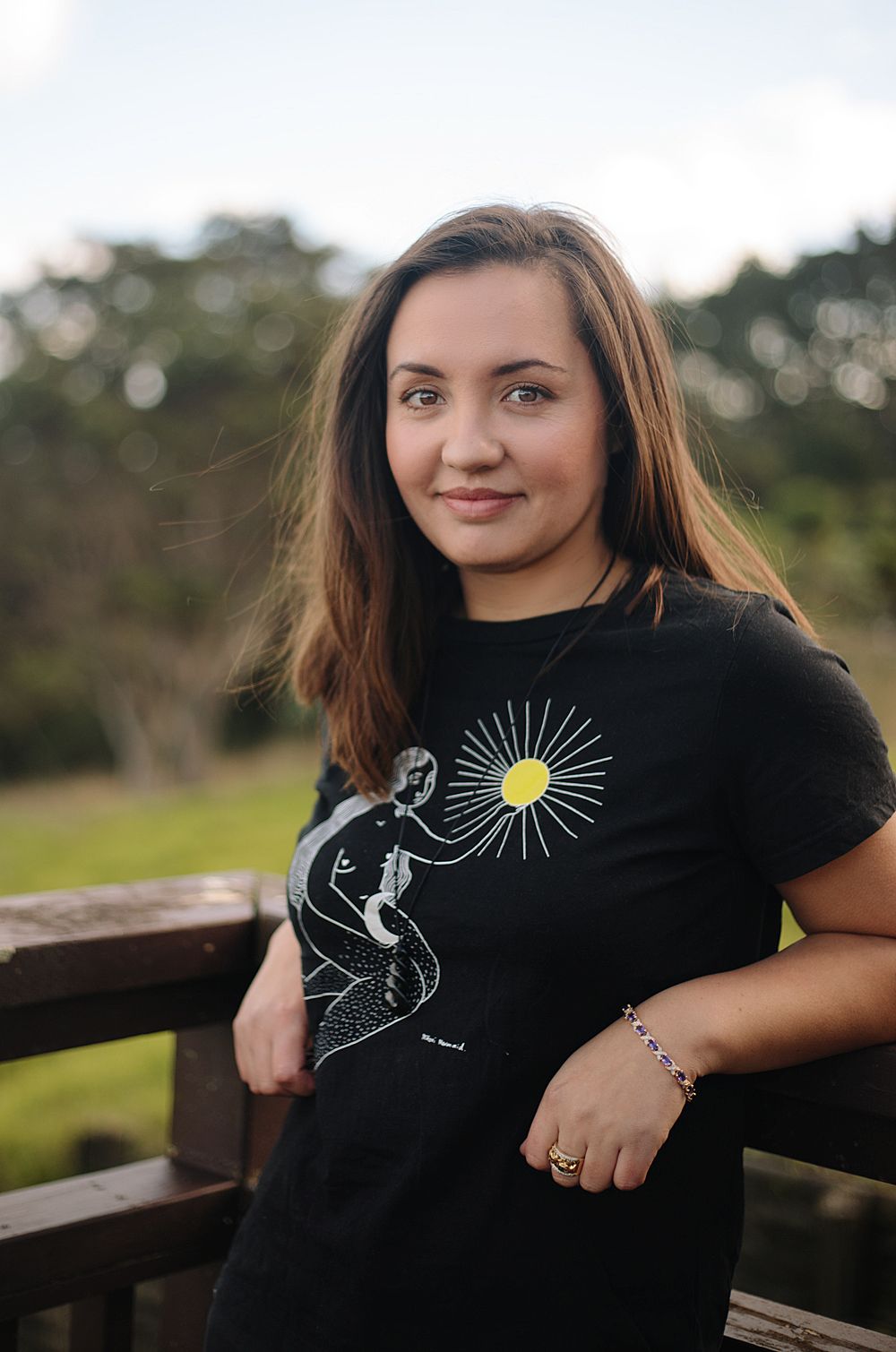Off The Beaten Track with Leonard Murupaenga
Whangārei artist Leonard Murupaenga has a kōrero with Kaupapa Māori Editor Ataria Sharman, on carving out an arts career.
In this new series, our editors at The Pantograph Punch venture out of the big cities and into the regions of Aotearoa to kōrero with some exciting creatives. In this one, visual artist and carver Leonard Murupaenga talks about tikanga in the arts and being inspired by his tūpuna.
Ataria Sharman: Describe your art to me.
Leonard Murupaenga: I think of my art as life imitating and art imitating life. I incorporate a full spread of multimedia: spray paint, acrylic, pen and pencil. I can work on canvas and sometimes I upcycle and add in whatever I can find. It’s a style that is both busy and chaotic – just like my mahi. I’ve always got 101 lists going on.
As I paint, I find a sense of peace. I sit there and do my art and it settles my mind down a bit. I find this with whakairo, too, getting the right adornments on the wood is time consuming and requires full focus. I consider this intensity of focus to be surrealist automatism, or automatic art, meaning I don’t think about the artwork, I just create. I don’t have a plan when I’m doing my mahi, I just let it flow.
AS: What inspires you?
LM: My upbringing. I had a positive childhood, born and raised in Pukepoto, a small town out of Kaitāia in the Far North. It was a tight community and I remember listening to the stories of my parents, the stories of our tūpuna. To this day, they continue to inspire and influence my artwork.
Here is an example. A few years ago, I was painting our house. I had some leftover paint so I decided to paint the bedroom door. But as I was painting the door, I started to see what looked like the side profile of a man’s face. So using my paints, I painted over it to make it even more obvious and from that a face really just emerged. I was standing there staring at my door and thinking, “Holy hecka, this is a face!” Looking at it, it felt like he was my tupuna, he looked like my tupuna.
I told a friend to come over and I showed it to her, and she told me, “Your tūpuna are hanging around you.” She could just feel it from looking at the face on the door.
.
AS: You’ve had an extensive arts career already, with work in over 40 exhibitions. Tell me – where did it all begin?
LM: For 14 years I worked at McDonalds. I would work on the weekends as a stay-at-home dad and look after the kids. At the same time, I decided to enrol in a Diploma in Applied Arts at NorthTec and it was then I started to paint again. I would fit my painting around mahi and the kids. I learnt a lot there. McDonalds was where I learnt managerial skills, which I’ve drawn on a lot in the creative sector. Eventually, I decided to give up that job, but knew I needed to find a way to still make money and support my whānau.
So I began to create small, framed art pieces, almost a bit like a produce conveyor-belt, and I hit the local markets with my artwork. I wanted to make as much art as possible with minimum time and money, and it turned out I could make an income selling my artwork at the markets.
AS: When did you move from markets into art shows?
LM: My mother-in-law owned some shops on John Street in Whangārei. One of them was empty and she suggested that I repurpose it into a gallery of my own work. This was massive as it was where I learnt how to hang pictures and to curate my artwork.
After my first solo show, a friend approached me to curate a group show and so I brought together a group of artists. In that new space we ended up organising three exhibitions over a period of two months. There were 16 artists in the first show, 23 in the second and the third had close to 50. It was like curating art had almost become addictive.
.
To keep costs down, the artists paid a koha to cover the food at each opening and I took a small commission, which paid for all the other things we needed to set up the space. We created and then hung posters around town, and spread the word on Facebook. After each opening I would tag the artists in with their mahi on social and share it through my networks. The reach on social media was good.
As I experienced all these different opportunities I started to get a sense… I could see an alignment going on. I started to see myself going somewhere.
Eventually, that space came to end. A friend wanted to set up his own art gallery and tattoo parlour, and we no longer needed the other one. We had a hui with our community and discussed how we could keep it alive, but I think at that time I knew we needed to let the space go. This wasn’t too hard for me. I always felt like there would be something else around the corner.
AS: When did you start to incorporate tikanga Māori into your shows?
LM: At the same time, I started to feel this draw towards needing to know who I was as someone who has whakapapa Māori. So I enrolled in a diploma in whakairo at Hīhīaua Cultural Centre in Whangārei, and realised that this was exactly what I had been looking for. A taha Māori art space.
.
While I was learning carving, people were still asking me to curate group shows in other venues. One of the key elements I had to work through in the curation process was how to incorporate our real purist Māori artists into group shows – how to do things in a way that felt right from a te ao Māori perspective.
So we asked one of our locals, Fred Tito, to open our shows in the proper way. We incorporated the tikanga of whakatau and karakia. Even if it wasn’t Fred, even if it was just me doing a karakia, we started to add in those ways of our people.
AS: Are your whānau creative as well?
LM: I’ve been with my partner for over 20 years and we have two boys. I try to pass on my art by doing positive things around them so they will absorb it, because that’s how I learnt. My father had this way of doing things and then you just picked it up.
My oldest boy enjoys illustration and he’s started writing story books. He also likes watching me when I carve and is always tapping things. Even though we do sometimes teach our kids, I always make sure they watch and see what I’m doing.
Throughout my life, my whānau has experienced quite a bit of tragedy. Because of that, I’ve always felt that those who have passed are always there with me. With my art and whatever I was doing, if there was a task I needed to do and it was really hard, I knew their wairua would get me through it. It gives me strength.
